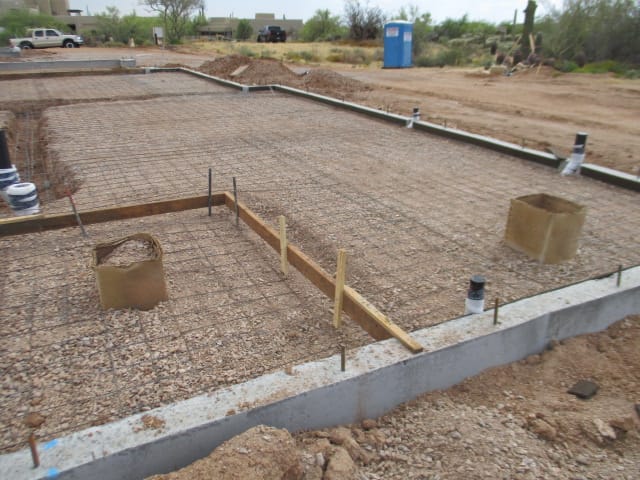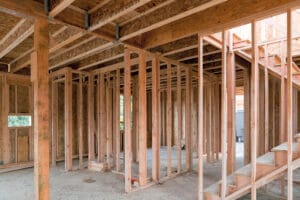Arizona’s unique desert environment presents distinctive, complex challenges for construction projects, especially in areas like Cave Creek where demanding soil conditions meet a rugged landscape. Effective foundation design in Cave Creek, Arizona requires the specialized knowledge of a licensed structural engineer familiar with local geology, climate patterns, and stringent building requirements.
This comprehensive guide explores the critical role of foundation design in this distinctive Arizona community, detailing the unique challenges, appropriate foundation types, and the professional process required to ensure long-term structural integrity.
The Critical Role of Structural Foundation Design
Foundation design is the most important decision in any construction project. It encompasses the engineering process of creating structural support systems that safely transfer a building’s entire load to the underlying soil or rock.
A properly engineered foundation design is the critical interface between the structure and the earth. It determines not only the initial stability of a building but also its long-term performance and durability against Arizona’s challenging environmental stresses.
In Cave Creek, the design must specifically address soil conditions that vary dramatically, from mountain foothills to desert valleys. This complexity means that relying on generic foundation plans is a recipe for costly failure. Poor foundation design inevitably leads to structural settlement, cracking in walls and floors, and compromised structural integrity—issues that are expensive and difficult to repair.
Arizona-Specific Foundation Challenges
Arizona’s climate and geology create foundation design requirements that differ fundamentally from those in other regions. Understanding these unique factors is why foundation design in Cave Creek, Arizona, demands specialized engineering expertise.
Expansive Soil Challenges and Clay Dominance
Expansive clays are a dominant feature across much of Arizona, including areas throughout Cave Creek. These soils contain minerals that absorb water and expand significantly when wet, then shrink as they dry. This cyclic movement, especially pronounced during the intense monsoon season, creates tremendous uplift and lateral forces that can destabilize non-compliant foundations.
Engineers must account for these expansive soil characteristics through:
- Appropriate Depth: Extending footings below the “active zone” where seasonal moisture changes occur.
- Reinforcement: Using enhanced steel reinforcement patterns.
- Post-Tensioning: Employing specialized systems that resist or accommodate soil movement.
Extreme Temperature Fluctuations
Cave Creek experiences dramatic daily and seasonal temperature swings, with summer highs often exceeding 110°F. These extremes cause concrete to expand and contract, creating stress at joints and connections. Properly designed foundations incorporate control and expansion joints, and reinforcement patterns that accommodate thermal movement without compromising stability.
Seismic Activity and Desert Drainage Patterns
While Arizona is less active than the West Coast, foundations still require seismic resistance appropriate to the region’s moderate risk level.
Crucially, intense monsoon storms can create flash flooding. Foundation design must integrate superior surface grading and drainage plans to direct water away from the structure, preventing accumulation that could saturate expansive soils and trigger movement.
Types of Foundation Design for Arizona Construction
The optimal foundation type is chosen based on the geotechnical analysis, structural requirements, and budget constraints of the Cave Creek site.
1. Slab-on-Grade Foundations
Slab-on-grade foundations consist of a single concrete slab poured directly on prepared soil. While cost-effective, their suitability in Cave Creek is often limited by expansive soils.
- Post-Tensioned Slab Systems: This is an advanced technique particularly well-suited to expansive soils. High-strength steel cables (tendons) are tensioned after the concrete cures, compressing the slab and creating a strong, rigid mat. This mat effectively bridges over localized soil movement, resisting cracking better than conventional slabs.
2. Raised Foundation Systems
Raised foundations elevate structures above grade, creating a crawl space or basement. These are generally less common than slabs but offer advantages on sloped or challenging sites.
- Stem Wall Foundations: Concrete walls (stem walls) sit on continuous footings, supporting the structure’s perimeter. These work exceptionally well on sloped sites common in Cave Creek’s foothill locations, allowing for level floors while following terrain contours.
3. Deep Foundation Systems
When surface soils cannot adequately support structural loads, deep foundation systems transfer forces to deeper, more stable soil layers or bedrock.
- Drilled Pier (Caisson) Foundations: These consist of large-diameter concrete columns extending deep into the ground. Drilled piers are ideal for commercial buildings or custom homes on sites with unstable surface soils, connecting the structure to competent load-bearing strata below.
- Helical Pier Systems: Steel shafts with helical bearing plates are screwed into the ground. This system is often used for remediation or new construction on marginal sites where minimal excavation is desired.
The Foundation Design Process in Cave Creek
Professional foundation design is a systematic process that must be led by a qualified structural engineer.
Site Investigation and Geotechnical Analysis
Foundation design must begin with a thorough site investigation. Geotechnical engineers conduct subsurface exploration, including test borings, to characterize soil composition, determine bearing capacity, and identify the specific expansive potential. Laboratory testing is used to determine:
- Bearing capacity: The soil’s load-bearing strength.
- Expansion potential: The soil’s tendency to swell when wetted.
- Plasticity index: The soil’s tendency to change volume with moisture.
Structural Load Analysis and Engineering Design
Simultaneously, structural engineers analyze the total loads the foundation must support, including dead loads (structure weight), live loads (occupants/furnishings), and environmental loads (wind and seismic forces).
The structural engineer performs detailed calculations to size foundation elements, ensuring adequate safety margins. For complex projects, they may utilize advanced computer modeling to simulate foundation performance under various scenarios. For professional Engineering and Design Services that integrate seamlessly with your construction project, a detailed load analysis is non-negotiable.
Construction Phase Engineering
A reliable foundation design doesn’t end with plans. Engineers provide essential construction observation services, verifying that contractors follow design specifications, soils are properly prepared, and reinforcement is correctly placed. This oversight is crucial for catching potential problems before they are covered up, ensuring the completed foundation performs precisely as designed.
How to Choose a Foundation Design Professional in Arizona
Selecting qualified professionals for foundation design in Cave Creek, Arizona, significantly impacts project success and longevity.
Verify Credentials and Arizona-Specific Experience
Arizona requires structural engineers to be licensed by the state Board of Technical Registration. You must verify that engineers providing foundation design hold current Professional Engineer (PE) licenses in Arizona.
Experience is paramount. Choose firms that have extensive experience in the Cave Creek/Phoenix metro area, as they understand the local expansive soil conditions and the specific requirements of the Arizona Building Code. For a full guide on choosing the right professional in Arizona, review our comprehensive guide.
Assess Technical Capabilities and Portfolio
Look for firms with robust technical capabilities, including access to qualified geotechnical consultants for soil testing and the ability to handle complex analyses. Request examples of similar foundation designs they’ve completed, paying attention to how they solved challenges on sloped or difficult sites.
Evaluate Communication and Collaboration
A successful project requires effective communication among the owner, engineer, and contractor. Choose an engineering team that is accessible, responsive, and willing to clearly explain technical concepts. They should provide realistic assessments of challenges and solutions and maintain an open dialogue throughout the project’s demanding design and construction phases.




